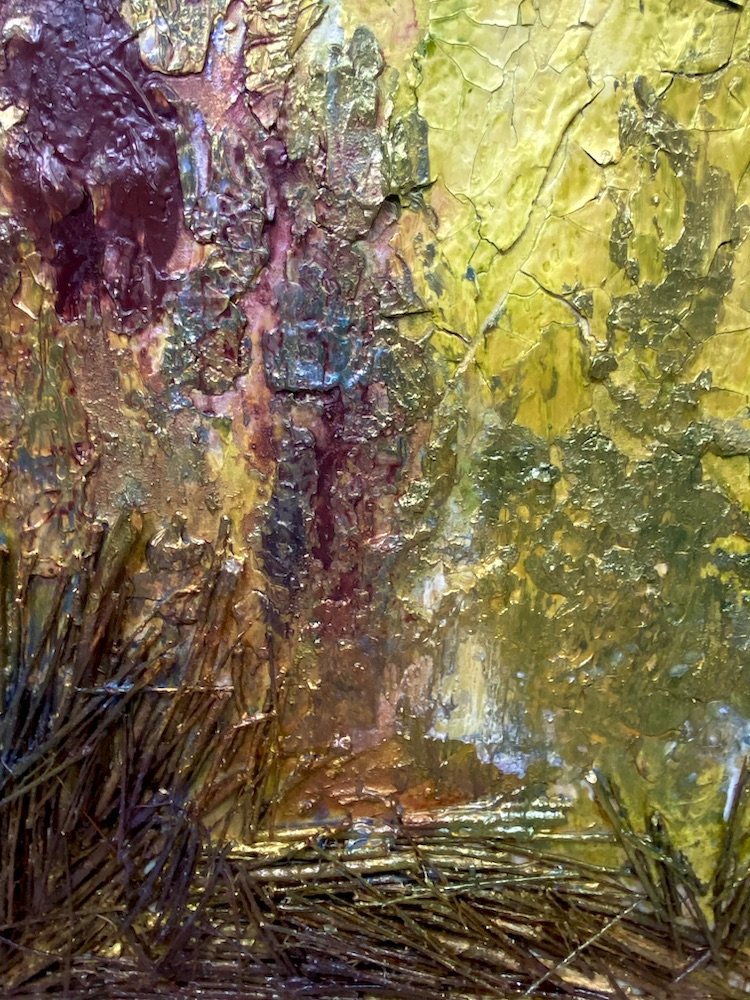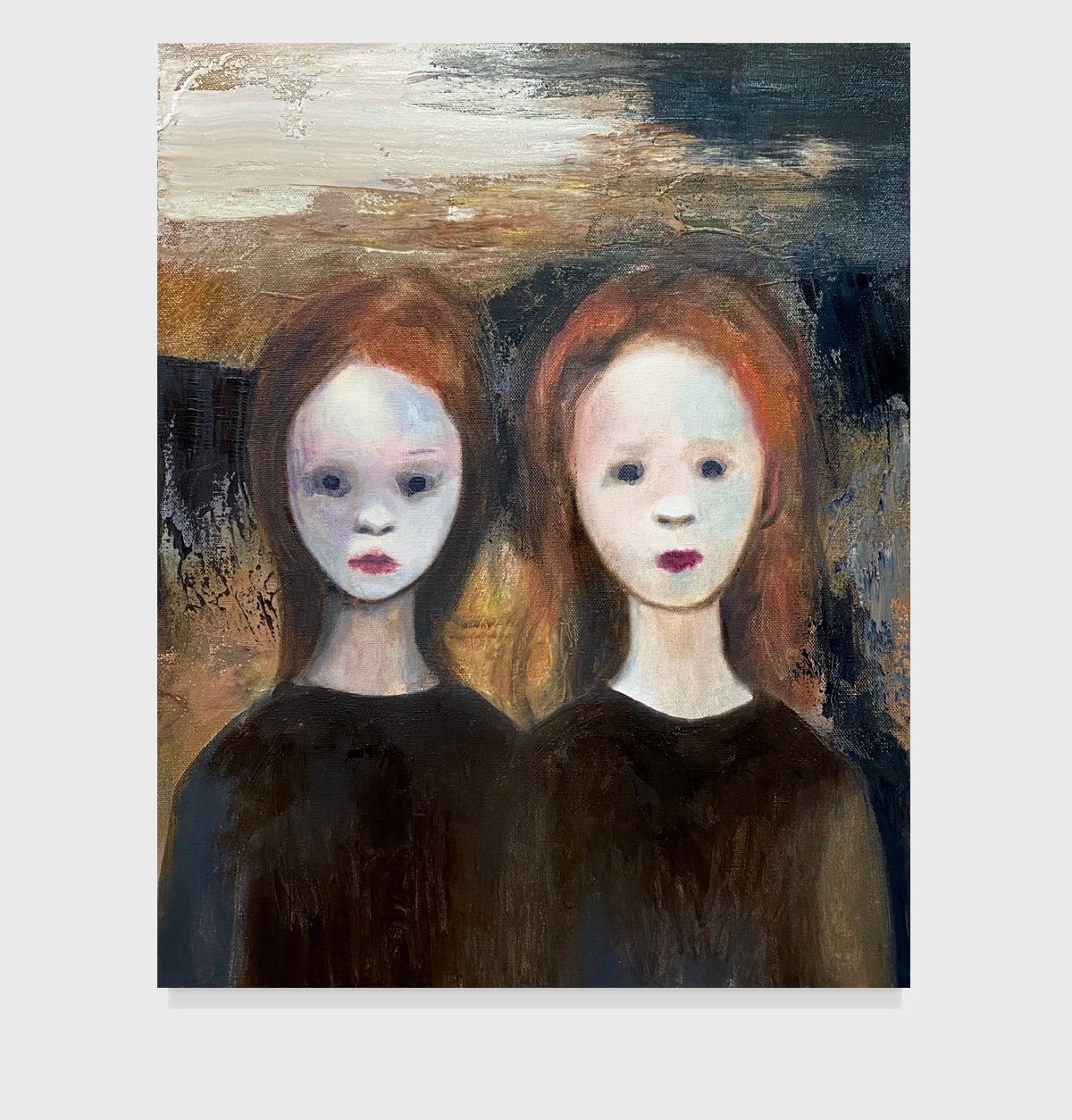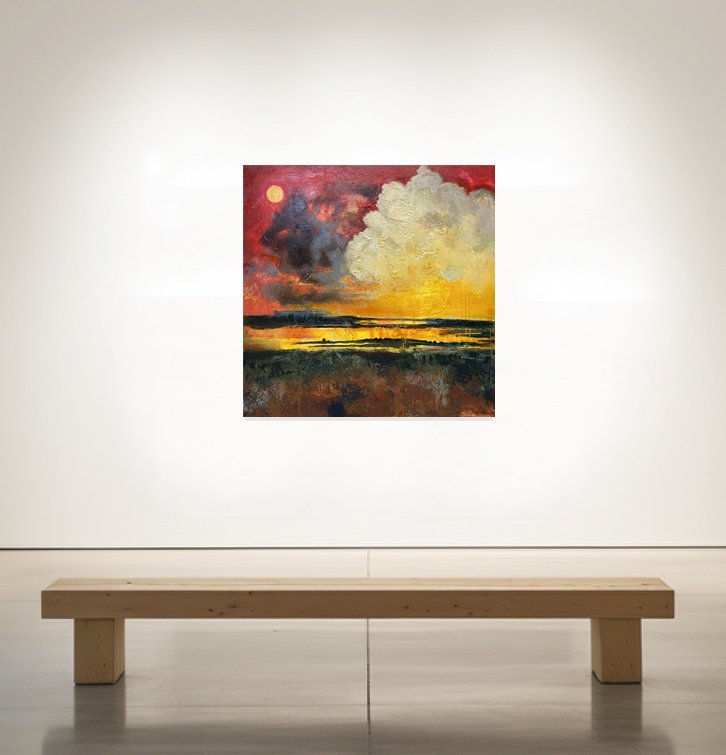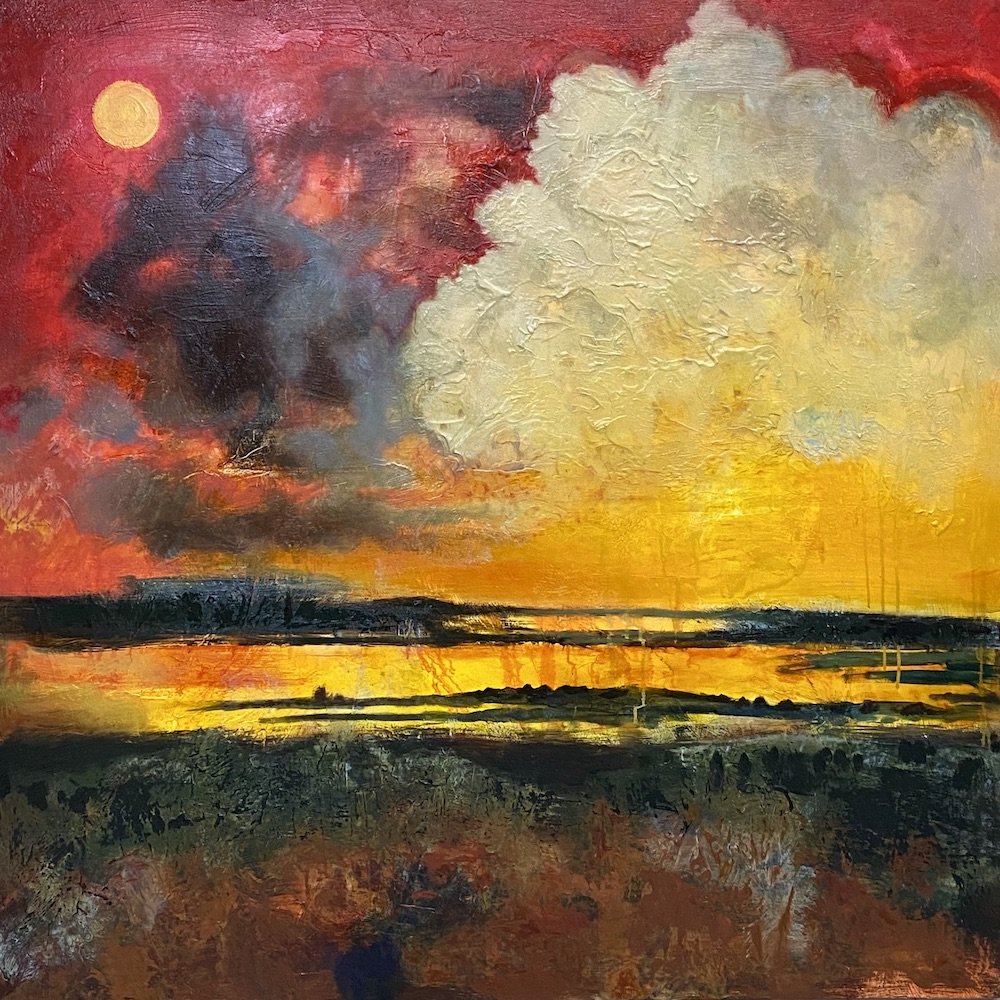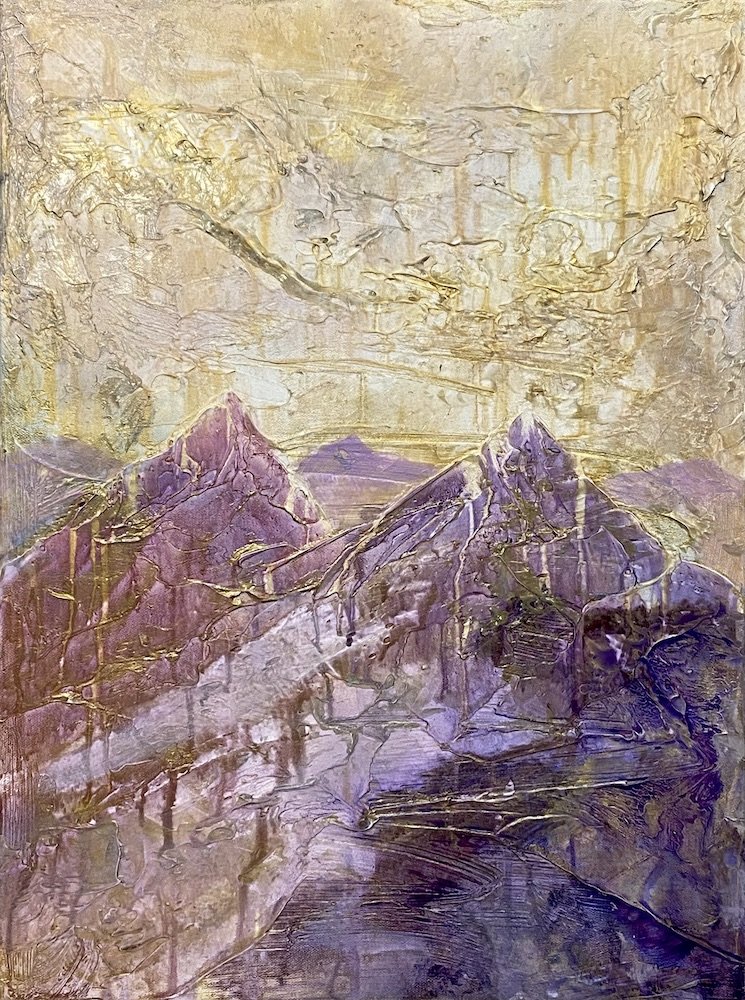In this series of paintings, I use the ancient wisdom and lifelike qualities of earthly clay to infuse these art-beings with powers that radiate positivity, optimism, and prosperity. Clay has a rich history and age-old past, with dozens of traditions throughout the world proclaiming that human life was formed from clay. Even today science continues to consider the possibility that all life originated from clay; the Clay Hypothesis proposes that complex organic molecules first formed on the surface of clay minerals in contact with an aqueous solution. Clay is a mysterious substance, and it leads me to question the lines between the living and the dead, and whether those lines are as distinct as we are told to believe, since my body is comprised of the same atoms and molecules found in stones and rivers and trees and mud and oil and paint and clay. Modern civilization often forgets that everything is connected.
Some of these paintings, like the one depicted above, incorporate branches from the plum trees in my southern California yard. These beautiful trees are some of the first to bloom in spring, and their branches become covered in sweet white blossoms as if snow-flocked, inviting life to the garden as the bees pass from flower to flower. Soon the fruits take hold, and when they ripen, I think they are some of the tastiest fruits in the world. The trees are resilient to climate change and even develop noticeable adaptations to the different microclimates around the garden. I care for them and prune them a few times a year, and staring at the small piles of sticks and wood before me, they call out to me: Use My Magic.
The history of the plum tree goes back thousands of years, originating in Asia and Europe. They are thus used metaphorically and symbolically in many cultures, often representing strength, beauty, and prosperity. Interestingly, when I discovered that Japanese tradition holds that the Plum is celebrated as a protective charm against evil, and the tree is traditionally planted in the northeast of the garden (the direction from which evil is believed to come), I looked at my own yard and realized that years ago I had planted a loquat tree in the northeast corner of my property, unaware of the Japanese tradition; lo and behold, a loquat tree is also known as a Japanese Plum!
Detail of Tree of Prosperity
Our ancient past spans millennia, and I don’t think our modern way of thinking should hastily reject thousands of years of existence. Carl G. Jung recognized the deficiencies in our understanding of emotionally charged pictorial language. “For in our daily experience, we need to state things as accurately as possible, and we have learned to discard the trimmings of fantasy both in our language and in our thoughts — thus losing a quality that is still characteristic of the primitive mind.”
The spoken word is powerful, it helps run our society, it organizes our thoughts, and it helps us rationalize the world. But Jung also states, “Consciousness naturally resists anything unconscious and unknown . . . and ‘civilized’ man erects psychological barriers to protect himself from the shock of facing something new.” Jung recognizes that “in the primitive’s world things do not have the same sharp boundaries they do in our ‘rational’ societies.” For example, primitive man “endows animals, plants, or stones with powers that we find strange and unacceptable.”
Our existence is not born from logic or the spoken word. I create art to explore the unconscious, trying to make sense of the unknowable and irrational through emotionally charged pictorial language, as it is a form of communication that the spoken word cannot touch. In doing so, I experiment with various materials and abstraction and representational styles so that in the end, I feel the finished piece beaming with life.
Detail of Tree of Prosperity
Cultures have worshipped inanimate objects since the beginning, believing that they have souls or godlike supernatural powers. Millions of people today still worship various places or things, even pieces of art. Yes, I believe I have a soul. The mystery is where the soul begins and where it ends, if at all. Does a plum tree have a soul?
As an artist, I respect my materials and believe they do hold powers beyond our comprehension. Using materials like plum branches and clay, I create art-beings that radiate where the edges of painting and sculpture coalesce.
Detail of Tree of Prosperity (view from an angle)
Detail of Tree of Prosperity (view from an angle)

